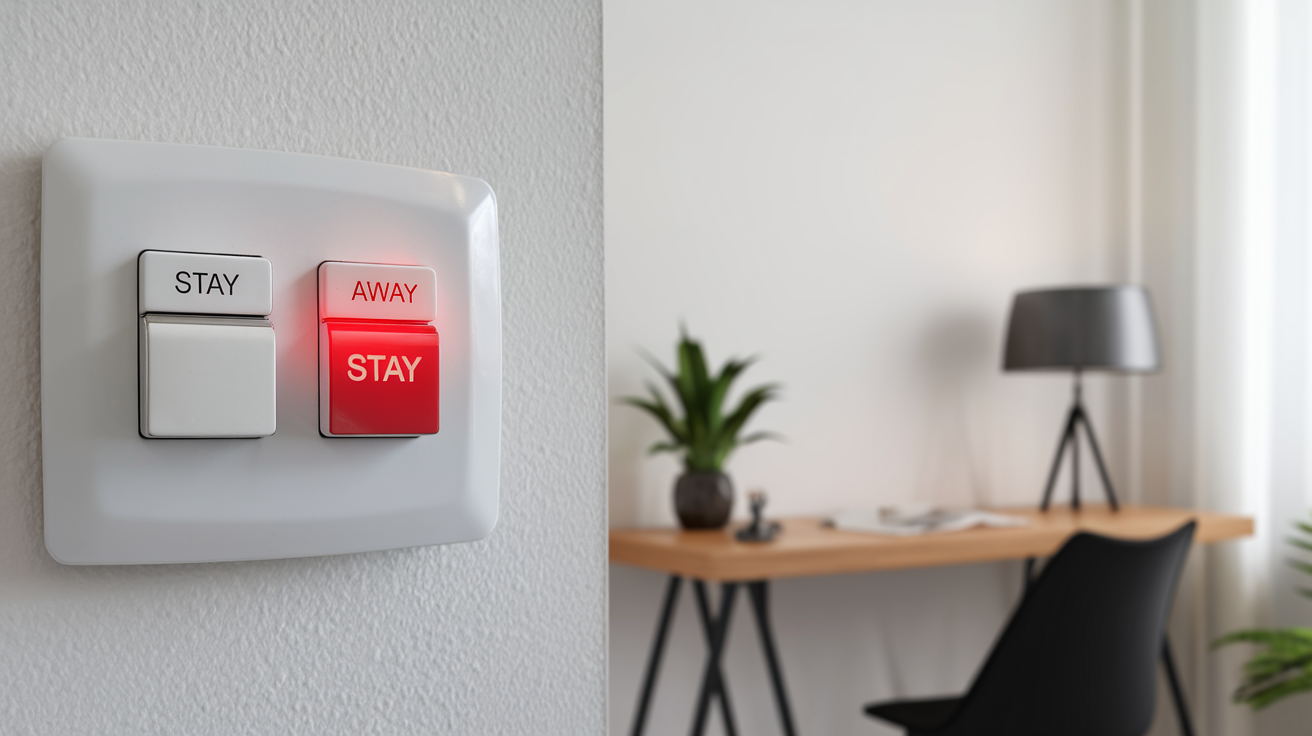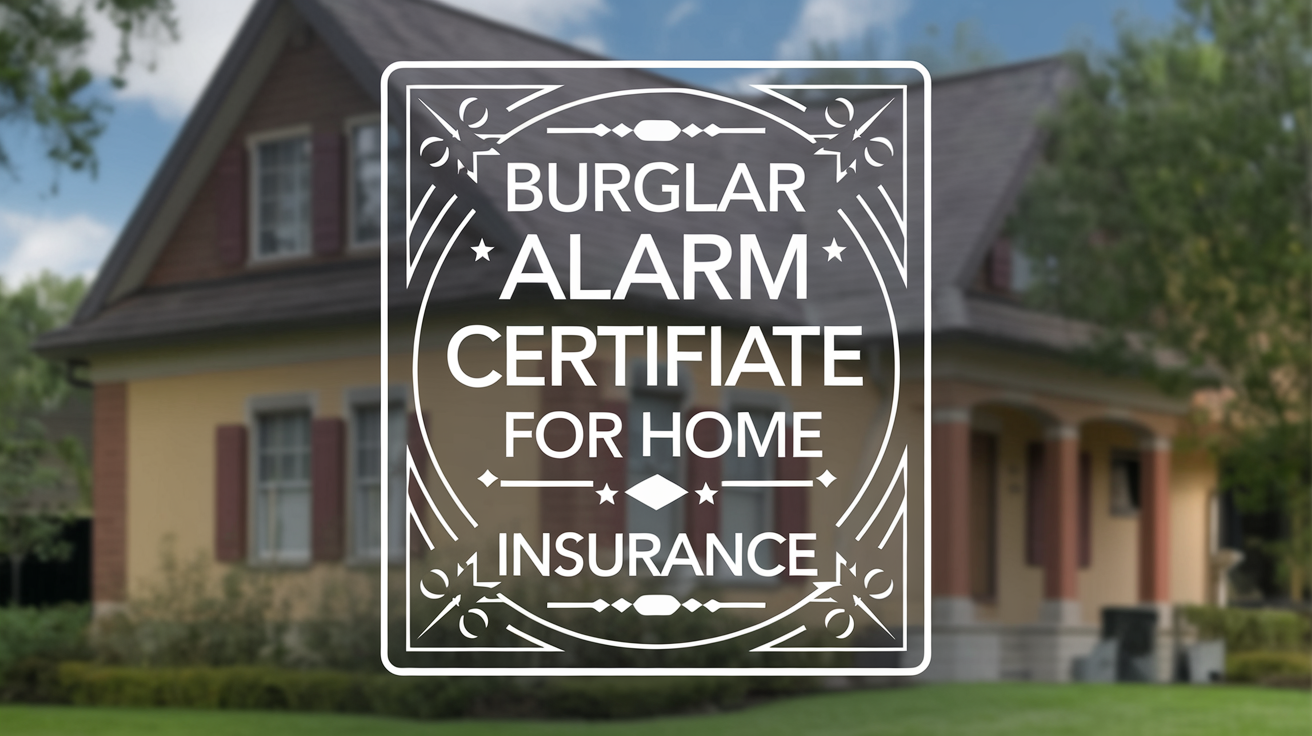When it comes to home security systems, understanding the available options is key to maximizing protection. Two frequently used settings—Alarm Stay and Alarm Away—offer distinct benefits depending on how your household operates. Setting your alarm correctly can make the difference between feeling secure and dealing with false alerts or vulnerabilities.
But what exactly do these modes do? And how can you decide which one is right for your home at any given time? This will break down the core differences between Alarm Stay and Alarm Away, explore how they work, and serve as a guide to applying them effectively to your unique situation.
By the end, you'll have a thorough understanding of these alarm settings and feel confident using your home security system to protect what matters most.
What Are Alarm Stay and Alarm Away?
Before jumping into comparisons, it's vital to define each mode clearly:
Alarm Stay
The Alarm Stay mode is designed for when you're inside your home but still want to ensure your safety. Commonly used overnight, this mode protects the perimeter of your home by arming entry points like doors and windows, without activating interior motion detectors.
- Best for: When you’re home and moving around inside (e.g., nighttime or staying in).
- How it protects: Prevents unauthorized entry while allowing free movement inside the house.
Alarm Away
Alarm Away is intended for when your home is unoccupied and needs full-scale protection. This mode activates all sensors, including motion detectors inside your home, in addition to securing all entry points.
- Best for: Times when you’re leaving the house and no one will be inside (e.g., going to work, vacation).
- How it protects: Ensures every window, door, and interior movement is monitored.
Understanding these key distinctions is the first step to optimizing your home security system.
Advantages of Alarm Stay
Alarm Stay mode strikes a balance between safety and comfort. Here’s why it’s an excellent choice when living inside your home:
1. Protection Without Disruption
Alarm Stay secures the perimeter of your home while leaving the interior unarmed. Feel free to roam around your living spaces without worrying about accidentally triggering the alarm.
2. Peaceful Nights
If you've got your loved ones fast asleep upstairs, Alarm Stay ensures your windows and doors are secured while avoiding any interruptions if someone gets up during the night.
3. Quick Emergency Response
Stay mode ensures that if someone tries to enter your home, the alarm will trigger immediately, alerting authorities or signaling an alert to you through your security monitoring system.
Example
Imagine you're home alone at night watching your favorite show. You set the Alarm Stay mode to ensure your doors and windows are protected. If an intruder tries to break in through the back door, you’ll get an instant alert—all while resting comfortably at home.
Benefits of Alarm Away Mode
For times when no one is home, Alarm Away provides the comprehensive coverage you need to deter and detect crime. Here’s why Alarm Away is essential:
1. Complete Security Coverage
Unlike Alarm Stay, this mode activates interior motion detectors, meaning any movement inside your home will set off the alarm. It’s your first line of defense against intruders who make it past the perimeter.
2. Protection Against Unexpected Intrusions
Whether you’re headed to the office or enjoying a family vacation, Alarm Away ensures that every square inch of your home is monitored—and protects against threats along all lines of entry.
3. Added Safeguards for High-Value Areas
Many home alarm systems offer features to alert you about movement in sensitive areas, such as rooms with valuables. Pairing this with Alarm Away ensures nothing goes unnoticed while you’re gone.
Example
Suppose you leave for a weekend getaway but forget to lock one of your windows. Alarm Away will detect any activity, notify you, and automatically alert authorities in seconds.
It’s like having eyes on your home 24/7, even when you can't.
Alarm Stay vs. Alarm Away at a Glance
Here’s a quick comparison chart to sum up the key differences between the settings:
| Feature | Alarm Stay | Alarm Away |
| Best Use | When you’re home | When you're away |
| Motion Sensors | Deactivated | Activated |
| Entry Point Sensors | Armed | Armed |
| Interior Protection | None | Full |
| Ease of Movement Inside | Yes | No |
Understanding which works best for you is as simple as assessing your daily routine.
How to Choose the Right Mode
Both Alarm Stay and Alarm Away offer unique advantages—but how do you know which to select at any given time? Here are three factors to consider:
1. Who’s Home?
If you’re staying home for the evening or sleeping, Alarm Stay is the go-to. On the other hand, if everyone will be out—whether for errands or a longer trip—Alarm Away provides the all-around coverage you’ll need.
2. Do You Have Pets?
Homeowners with pets may need to adjust their Alarm Away settings if interior motion sensors are activated. Some systems provide “pet-friendly detection,” designed to ignore movement below a certain weight threshold (usually between 40–80 lbs). Check with your security provider for this feature.
3. How Secure Is Your Neighborhood?
Security needs can vary based on your location. Live in a high-traffic urban area? Alarm Away will add a layer of coverage and peace of mind when you leave. Perimeter security via Alarm Stay often works well for those in quieter suburban or rural areas while they’re at home.
By tailoring your choice to these factors, you’ll get the most out of your home alarm system.
Essential Tips for Maximum Security
Here are quick ways to further optimize your system’s Alarm Stay and Away settings—no matter which you choose:
1. Regularly Test Sensors
Ensure all entry points and motion sensors are operational. Perform system checks monthly to prevent issues before they arise.
2. Customize Notifications
Stay informed by setting your alarm system to send text or email alerts when triggered. Many systems even offer app integrations for real-time updates.
3. Don’t Forget About Cameras
Pairing alarms with security cameras is an excellent way to visually verify alerts. Some setups even allow direct access to cameras via smartphone apps.
4. Educate Your Household
Make sure everyone in your family understands how and when to use each mode—especially children.
By combining these tips with your alarm settings, you’ll enjoy a safer, easier-to-manage home protection experience.
Find Peace of Mind with the Right Alarm Settings
Choosing between Alarm Stay vs. Alarm Away doesn’t have to be complicated. Think of these modes as two sides of the same coin—each playing a critical role in securing your home against potential threats.
Whether you're tucking in for the night or heading out for the day, understanding the distinctions between these modes ensures you’re making the most of your security system.
Not sure if your current system meets your needs? Many modern alarm providers offer systems with customizable settings to fit your home perfectly. If you’re in the market, now’s the perfect time to upgrade for better protection and peace of mind.
Lastly, remember that security isn’t about reaction—it’s about prevention. Take steps today to safeguard your loved ones and your property so you can focus on enjoying what matters most.



